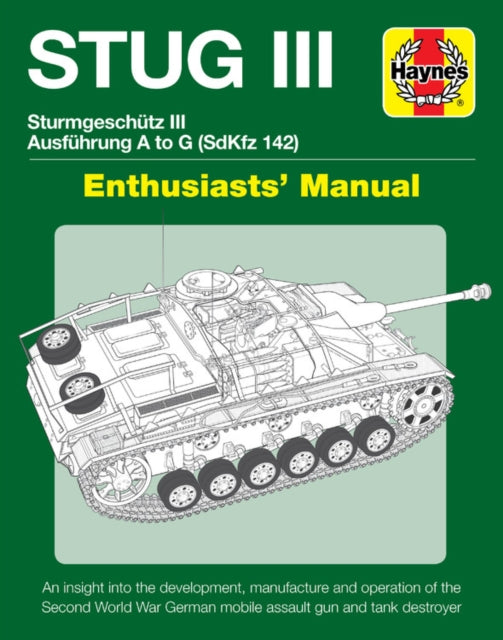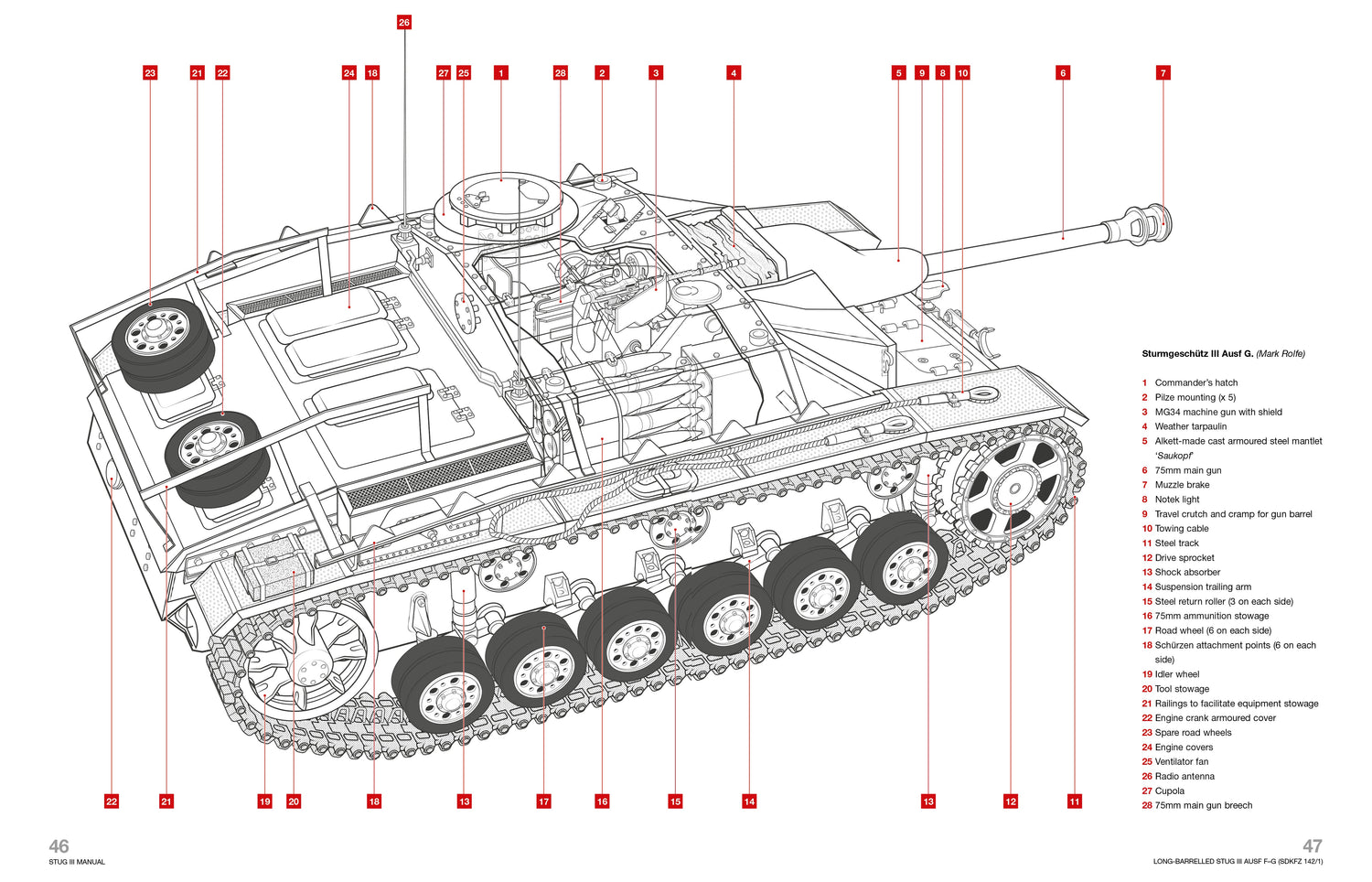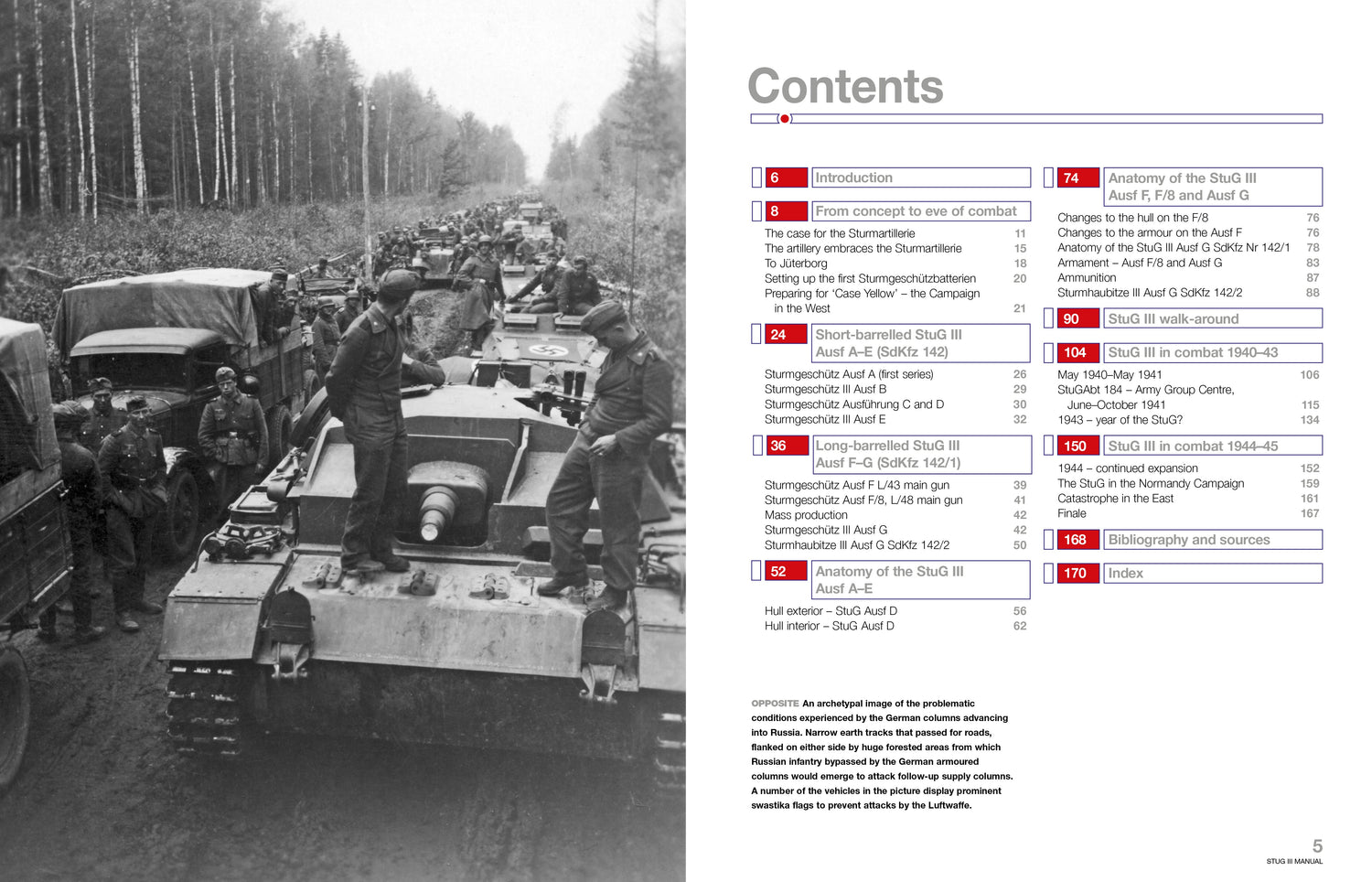Stug III Haynes Manual
Usually shipped within 24 hours
UK deliveries from £5.95
Delivery & Returns
Delivery & Returns
We use the Royal Mail, DHL Express or UPS for our customers. For UK addresses, deliveries under 10kg are a standard £4.95 via Royal Mail Tracked 48 Service. For orders over 10kg and overseas customers, postage is calculated for you at checkout once you have entered your postal address. This price, does not include any potential custom charges that may apply, depending on the product or destination, as every country has very different import duties / taxes. Online exclusive products (such as trainers) will be delivered to you directly from the printer, separate from other items in your order, but your postage fee covers ALL items in your order.
If you are unhappy with your purchase, please email shop@tankmuseum.org within fourteen (14) working days of receiving your goods, and return it to us at the address below, in its original condition, unopened (with any seals and shrink-wrap intact) and we will issue you a full refund or replace it. Goods must be returned at your own cost. If the item is faulty, you do not need to return it, we will send you a replacement free of charge.
Description
Description
By Mark Healy
Learn about everyone's favourite German WWII assault gun.
The German Sturmgeschütz series of assault guns was a successful and cost-effective range of armoured fighting vehicles, of which some 10,000 were built during the Second World War. Based on the chassis of the Panzer III tank, the turret was replaced by an armoured fixed superstructure fitted with a more powerful 7.5cm StuK 40 L/48 gun. Originally intended as a mobile assault weapon for infantry support, the StuG was constantly modified and saw extensive use on all battlefronts as an assault gun and tank destroyer. Its fixed superstructure with limited-traverse mounting for the main armament was simpler and cheaper to build than the turret of the battle tank, plus its low height meant it was easy to camouflage and conceal. Towards the end of the war, more StuGs were built than tanks.
StuGs also saw combat when used by several Axis allies, notably Romania and Finland; they were also exported TO Bulgaria, Hungary, Italy, and Spain. The Soviet Union gave some of their captured German vehicles to Syria in the 1950s, which continued to use them up until the War over Water against Israel in the mid-1960s. By the time of the Arab-Israeli Six-Day War in 1967, all of them had been either destroyed, stripped for spare parts, or emplaced on the Golan Heights as static pillboxes.
This book is Hardback.
![Stug III Haynes Manual Book [variant_option4]](http://tankmuseumshop.org/cdn/shop/products/9781785212130.jpg?v=1748337529&width=1214)

![Stug III Haynes Manual Book [variant_option4]](http://tankmuseumshop.org/cdn/shop/files/StugIIIHaynesManual1.jpg?v=1750258897&width=1214)

![Stug III Haynes Manual Book [variant_option4]](http://tankmuseumshop.org/cdn/shop/files/StugIIIHaynesManual.jpg?v=1750258899&width=1214)

![Stug III Haynes Manual Book [variant_option4]](http://tankmuseumshop.org/cdn/shop/products/9781785212130.jpg?v=1748337529&width=88)
![Tank Museum Playing Cards Game [variant_option4]](http://tankmuseumshop.org/cdn/shop/files/ProductShoot_10_10_2025035.jpg?v=1760358498&width=176)
![Tank Museum Wrapping Paper - Two sheet pack Wrapping Paper [variant_option4]](http://tankmuseumshop.org/cdn/shop/products/Wrapp_Paper_All.jpg?v=1748337915&width=176)
![Stug III Haynes Manual Book [variant_option4]](http://tankmuseumshop.org/cdn/shop/products/9781785212130.jpg?v=1748337529&width=640)



